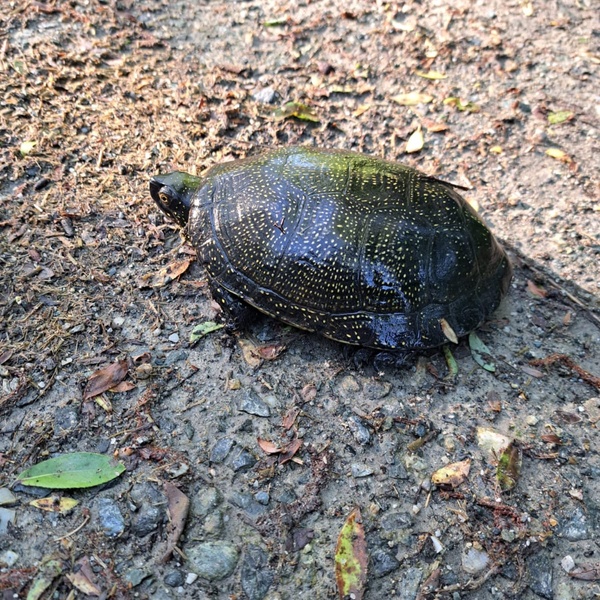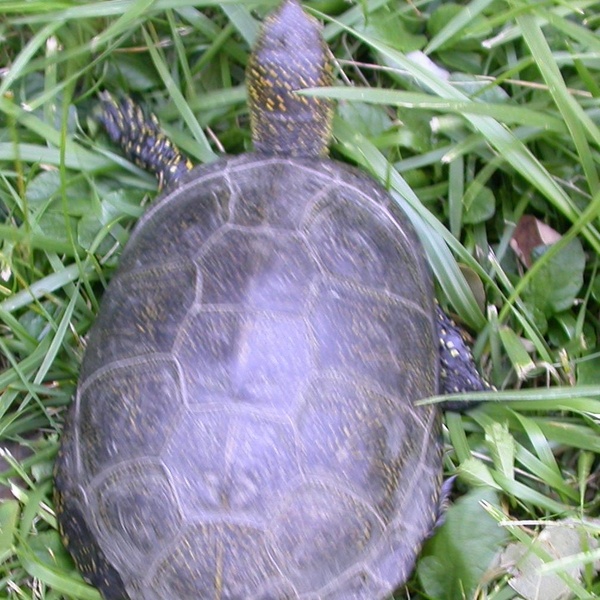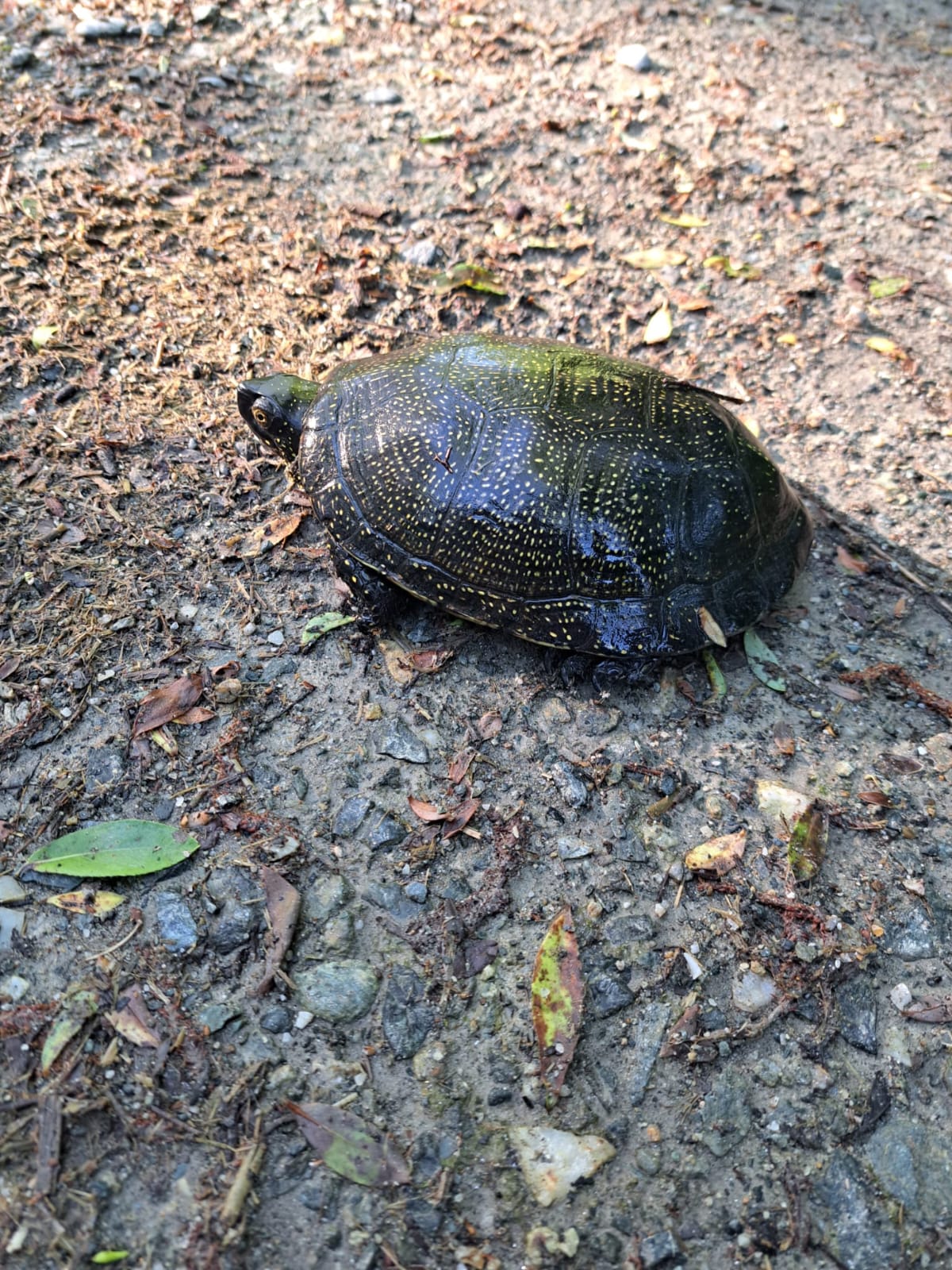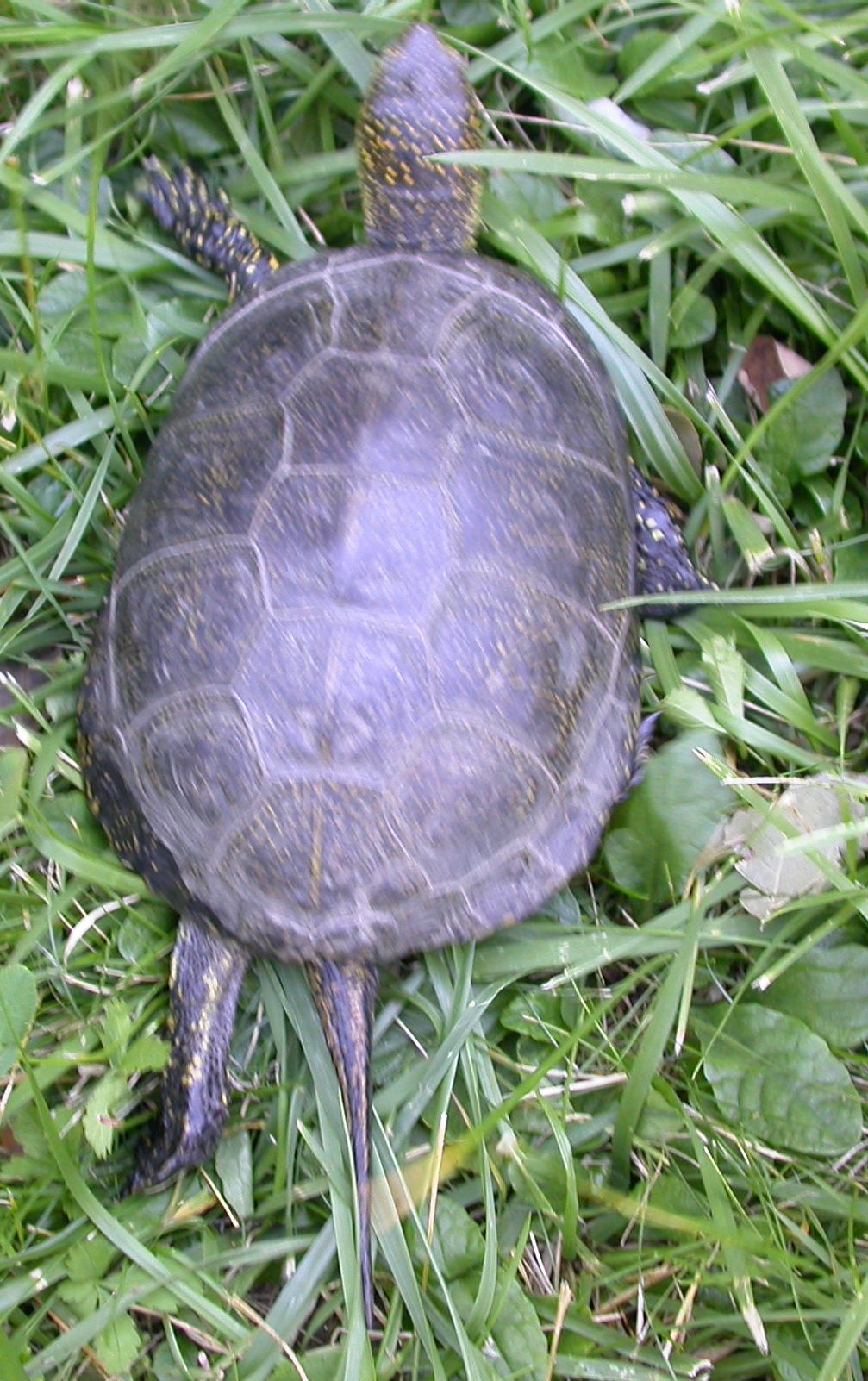Biodiversity at risk: the Emys orbicularis
May 22, 2025Some history
The discovery of the European pond turtle in the Avigliana Lakes area is very recent as the first verified sighting dates back to the summer of 2007 when an individual was marked between Lake Grande and the Mareschi Marsh by the Park Authority staff. In 2013, a private citizen took a photograph of a second turtle sighted in Lake Piccolo. Starting from 2017, the staff of the Cozia Alps Parks began a monitoring project for the species. In the summer of 2024, a more in-depth study was entrusted to biologists Daniele Seglie and Riccardo Cavalcante.
The results in brief
Between 2017 and 2024, 19 specimens of Emys orbicularis were captured (and immediately released), including 13 males, 4 females, and 2 sub-adults. Based on the most commonly used models in the literature for population estimation, an abundance of 27 individuals can be estimated, with a standard error of 10. From a comparison of the reproductive rate and average lifespan of the species, it can be predicted that the turtle could go extinct around 2050 in the Avigliana Lakes Natural Park unless further conservation measures are adopted. It is noteworthy that in 2024, 2 deceased specimens were found, presumably due to vehicle impacts.
The biologist's analysis
With what objectives was the study conducted?
«The work carried out in the summer of 2024 at the Avigliana Lakes Natural Park – says Daniele Seglie – had two main objectives: the collection of blood samples for genetic analysis and the marking of individuals using a Passive Integrated Transponder to allow for quicker recognition in the future. The recent discovery of the species in this area raised suspicions that it could be a recent anthropogenic reintroduction of more domesticated subspecies. The comparison of DNA collected from the captured individuals, conducted through the Life Urca Proemys project, confirmed that the individuals of Emys orbicularis from the Avigliana Lakes belong to the hellenica subspecies, native to the Po Valley basin. This is thus the most western population we have recorded, a relic core that therefore holds greater conservation importance, which we have included in a national database for potential reintroduction activities. It should be noted that over the last 30 years, the species has experienced a drastic decline in Piedmont, surviving with the two nuclei of Avigliana and Caselette and with some more substantial populations dispersed in the Vercelli area.»
What is the health status of the species in the Avigliana area?
«Thanks to the work done in recent years by park ranger Gianabele Bonicelli – continues Seglie – we have a fairly accurate estimate of the population, which is too small and characterized by a high average age and a predominance of males over females. The causes of this can be attributed to a general degradation of their preferred environment. First of all, it should be emphasized that Emys orbicularis has a disadvantageous reproductive strategy because they reach sexual maturity late and suffer a high rate of egg predation within the nest, up to 90%, by small carnivores and mustelids. After hatching, the young are preyed upon in the water by non-native fish species such as the catfish, and on top of this, there is competition with the red-eared slider. Finally, sex determination depends on the incubation temperature: below 27 °C males are born, above that females. In the Avigliana area, it is likely that the eggs with the highest chance of hatching are those laid in areas with denser vegetation, sheltered from the sun and therefore cooler. If we consider that the vital threshold for a population is around 200 individuals, we can state that the situation is critical but not compromised because we believe it is still possible to intervene to prevent complete extinction.»
Conservation actions
In light of the results from the studies and monitoring conducted, the Protected Areas of the Cozia Alps have included the Emys orbicularis among the species targeted for intervention within the Life NatConnect2030 project. The goal is to adopt concrete and effective conservation measures for the species, also drawing from the positive experiences gained within the Life Urca Proemys project, which is leading to the reintroduction in the Po Piedmontese Natural Park of new individuals bred in captivity at the Emys Piemonte Center to reinforce the existing populations.
You might also be interested in...
- campaign The second newsletter of the Life Predator
- campaign A study on the zoonoses of aquatic turtles
- campaign Professional fishing for catfish is starting.
- campaign Two days of discussion on water resource management
- campaign Silent Predators
- event Predatori silenziosi
- shopping_cart Natural Park of the Avigliana Lakes - A park of water and sky
- shopping_cart Diventiamo amici?
- tactic Alcotra BiodivTourAlps
- tactic BIODIV'CONNECT
 Research
Research



